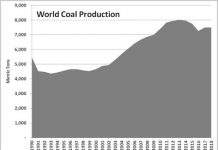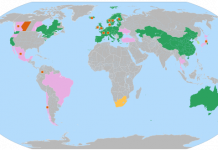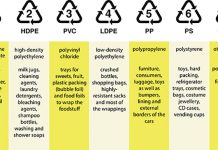Tom Konrad CFA
I recently interviewed Richard Domaleski, CEO of World Energy Solutions (NASD:XWES). World Energy is a comprehensive energy management services firm whose core offering is extremely price competitive energy sourcing (that is, finding an energy provider to supply all of a client’s energy needs at the lowest possible cost.)
![]()
They achieve competitive sourcing using an electronic energy exchange designed to achieve much better price discovery in what is traditionally a very opaque market. According to Domaleski, a recent KEMA study showed that only 7% of large commercial, industrial, and government customers are sourcing their energy online; the rest are using traditional brokered or paper-driven deals. World Energy currently has about 5% of the market, leaving plenty of room for growth. Among their current customers are the General Services Administration (the Federal Government’s procurement arm), several state governments, General Dynamics Land Systems, and Brown University, to name a few.
They also partner with Energy Service Companies (ESCOs). ESCOs sign energy customers up to a “Performance Contract” under which the ESCO is paid a fixed fee in order to deliver a defined set of energy services (lighting and temperature levels, for example), and the ESCO makes energy efficiency improvements using their own capital to reduce energy use while still delivering the defined energy services. The lower energy use quickly repays the ESCO’s out of pocket capital cost, leading to lower (and stable) energy bills for the customer, and a healthy profit for the ESCO.
Domaleski says that 143 such ESCOs and other procurement companies now use World Energy’s procurement platform to source their energy. When I asked for names, he cited non-disclosure agreements but was able to say that one prominent one was SAIC (NYSE:SAI). Yet adoption of World Energy’s platform is not universal. One prominent ESCO they pitched but did not convince is the leading pure-play publicly traded ESCO: Ameresco (NYSE:AMRC).
Is it Green?
Getting electricity and natural gas at lower prices may be a compelling proposition for World Energy’s customers, but environmentally concerned investors should think twice before calling it green. A lower price for energy is more likely to discourage than encourage energy conservation, and hence lead to higher, not lower energy emissions. Energy sourcing may or may not include the sourcing of green power or Renewable Energy Credits (RECs.) A REC is a way of accounting for all the green or environmental attributes of a MW of electricity.
World Energy draws a distinction between “physical green power” and RECs, with the former being produced from renewable sources on the same ISO as the customer, and the RECs often produced somewhere else in the world. I don’t think this is a very useful distinction, since the actual power produced is often not the same as the power consumed due to both proximity and timing issues. A simple example of why this is so can be seen in the case of a supermarket that signs up for 100% locally produced wind power. While a nearby wind farm will indeed be producing the same number of kWh as the supermarket consumes, the supermarket keeps its lights on and continues to run its refrigeration even when the wind is not blowing at the local farm. In this sense, “physical green power” is just normal electricity with bundled RECs.
What really makes a REC (or “physical green power”) green is additionality. If the price of the REC is enough to ensure that a wind farm that would not otherwise have been built is indeed built, then the REC is additional. World Energy’s ability to extract the lowest possible price for RECs may work to undermine the additionality of those RECs. After all, which is more likely to increase the chances of a wind or solar farm being built: a $10 REC, or a $20 REC?
Low Price as a Gateway Drug
Yet it’s hard to see saving money as a bad thing, and I find World Energy’s numerous ESCO partners very encouraging. If World Energy’s procurement platform enables ESCOs to offer potential customers performance contracts at lower prices, more such customers will sign up, and receive the energy efficiency improvements that are the ESCOs’ bread and butter.
World Energy also offers energy efficiency improvements to their direct customers as well as helping those customers capture the utility incentives available for energy efficiency and Demand Response programs. Demand Response companies like Comverge (NASD:COMV) and EnerNOC (NASD:ENOC) may use World Energy’s demand response exchange, but also compete with them to sign up customers directly. As with ESCOs, World Energy does not say which Demand Response providers use their exchange, but they did say that they have 20 leading providers signed up.
One of the most significant barriers to energy efficiency is simply the complexity of options on offer. Although the internal rate of return on efficiency investments is very high, the absolute number of dollars available from energy efficiency is seldom enough to sell a facilities manager. Facilities managers seldom have an incentive or expertise to save energy, although this is improving as companies become more energy aware and make changes to employee incentives to fit the new goals. Yet it is still generally difficult to get most facilities managers to give energy the attention it needs in order to capture the available energy savings. Lower energy prices, on the other hand, are easy to grasp and communicate to higher-ups. If World Energy and ESCOs working with them can offer a facilities manager a one-stop shop for both lower energy prices and additional energy savings, they’ll be much more willing to take action, even with weak internal incentives. One step World Energy has recently taken to make this decision much easier is their strategic investment in Retroficiency a company whose technology will allow World Energy to conduct virtual energy audits for clients based on the detailed energy usage data they are already collecting. This will allow facilities managers to easily identify the particular buildings in their portfolios most likely to benefit from more detailed energy audits and retrofits.
Other Businesses
World Energy also runs other trading platforms, most notably the platform for trading carbon credits under the Regional Greenhouse Gas Initiative (RGGI). With New Jersey pulling out of the ten-state RGGI climate initiative, I thought it would be interesting to get Domaleski’s perspective, but he was unable to comment due to a confidentiality agreement with RGGI. This exchange is part of their Green green product line, which accounts for approximately 5% of World
Energy’s business and includes other environmental commodity trading as well as RGGI.
At the urging of a utility, World Energy has also recently launched a wholesale energy exchange. This exchange enables utility and municipal customers to find the best price for power from World Energy’s 500 suppliers. This must be a useful service, because in the four years since the exchange was launched, they have signed up 70 large customers. The company’s Wholesale division accounts for roughly 15% of revenues.
Conclusion
The move to internet based energy sourcing seems like an inevitability, and World Energy has a powerful first mover advantage. While online procurement of energy may not be green in and of itself, the savings on offer serve to get building managers in the door. If World Energy or its ESCO partners can then include significant energy efficiency and green power in the mix, we have the formula for a significant shift towards a more energy efficient economy.
 In this sense, World Energy may be a lot like Wal-Mart. Customers come in the door for low prices, but then find it easy to buy energy efficient products as well.
In this sense, World Energy may be a lot like Wal-Mart. Customers come in the door for low prices, but then find it easy to buy energy efficient products as well.
DISCLOSURE: Long ENOC,COMV.
DISCLAIMER: Past performance is not a guarantee or a reliable indicator of future results. This article contains the current opinions of the author and such opinions are subject to change without notice. This article has been distributed for informational purposes only. Forecasts, estimates, and certain information contained herein should not be considered as investment advice or a recommendation of any particular security, strategy or investment product. Information contained herein has been obtained from sources believed to be reliable, but not guaranteed.






Tom,
On a previous post I asked about your stock picks and you answered. Then I followed up with another question and you probably missed it because I did not get a reply. Would appreciate one. Here is the link to the post in question:
http://www.altenergystocks.com/archives/2011/06/ten_clean_energy_stocks_id_buy_now.html
Sorry about that. I’ve answered it.
A lower price will put on risk the renewable sector. And i think it is already on risk enough